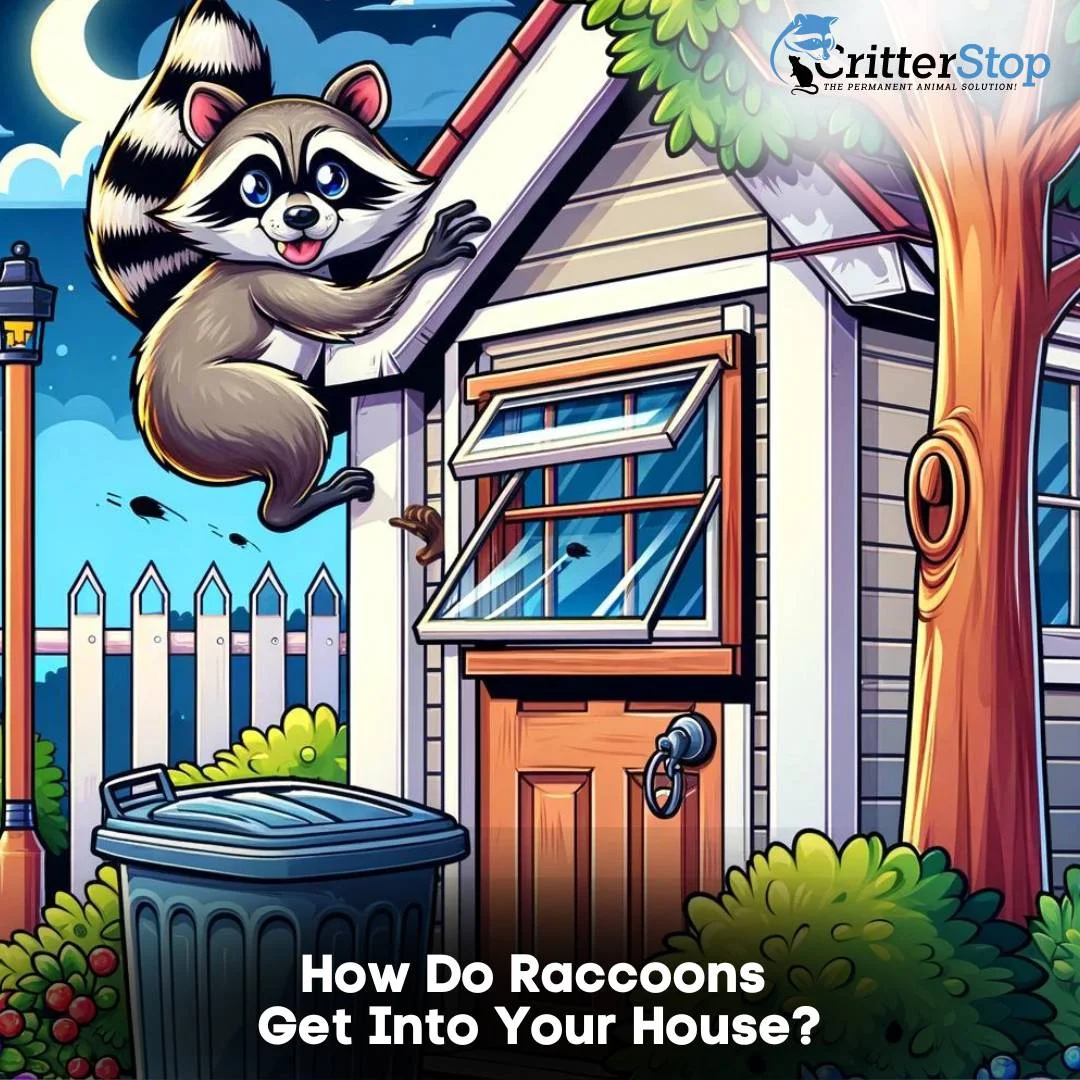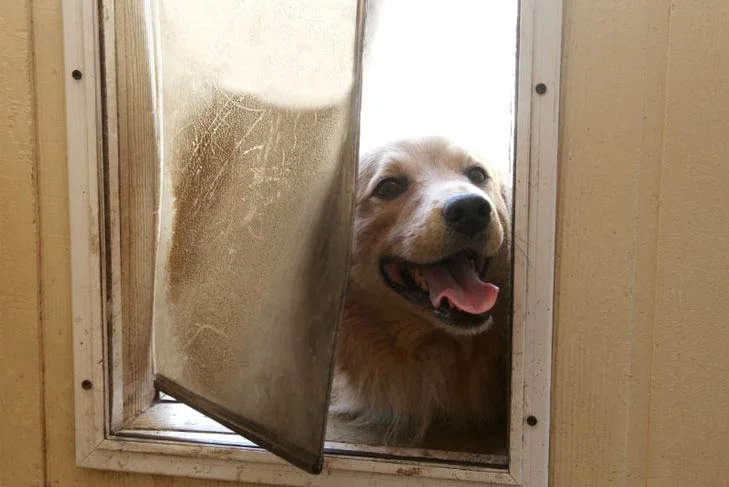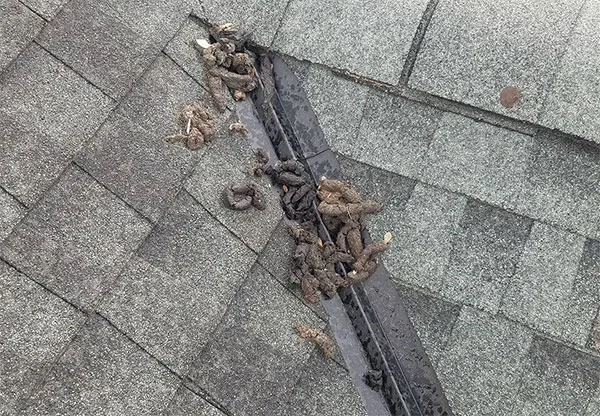
Summertime is prime time for most people to get outside and enjoy their outdoor space with family and friends. Unfortunately, it is also prime time for raccoons in houses to become an issue. With their dark masked faces and furry tails, raccoons may look cute and innocent, but looks can be misleading. These critters are quite destructive and can cause significant damage to your property.
Raccoons in house settings can be extremely messy, leading to destruction of your belongings and property. Beyond the property damage, raccoons also pose serious health risks. Their feces can carry diseases like Leptospirosis and Salmonella, which can be harmful to humans and pets alike.
If you're wondering, can raccoons get in your house, the answer is yes. Understanding how they find their way inside can help you prevent future infestations. This article explores how do raccoons get in your house and what measures you can take to avoid these unwelcome visitors.
Raccoons in house environments often enter through weak structural points. Like most wild animals, raccoons are opportunists and will take advantage of even the smallest opening to gain entry. Whether it’s a gap in the roof or an unsecured pet door, raccoons will use any access point they find.
Here are some of the most common ways raccoons get into houses:
A roof-soffit intersection is any area on your roof where the soffit is placed just above the roof section. When built to code, builders leave a small gap between the roofing material (shingles, tile, etc.) and the soffit board so that water does not transfer from the roof to the soffit and cause the material to rot. Although beneficial in preserving your soffit boards, those gaps let air from your attic out, inviting rodents in. If the builders did not leave a sufficient gap, it is only a matter of time before the soffit rots out, allowing easy entrance for raccoons known for their strength.
When soffit isn’t made from a material that can easily rot, it is usually made of thin plastic or aluminum, neither of which are reliable deterrents for raccoons. Once the soffit is opened, raccoons can easily access the entire attic.

We have provided our raccoon removal services hundreds of times in Dallas-Fort Worth, and we have found that another ideal entry point for raccoons is the bottom part of the chimneys, as it is the best place for the mother raccoon to nurse her babies. Mostly adult raccoons use chimneys for their shelter and protection.
Once inside the chimney, raccoons can easily make their home on top of your fireplace damper. Unfortunately, they will often find a way to access the inside of your home, causing great structural damage to your property.
The purpose of these roof vents is to allow proper air circulation in your attic. At Critter Stop, in our experience as raccoon removal experts, these vents can also give raccoons easy access to the inside of your home. These plastic or aluminum vent covers are no match for powerful raccoons.
Another common way raccoons get into your house is through your pet door, especially if a food bowl is placed near it. Raccoons have a strong sense of smell and are pretty fearless wild animals, so the food's smell is enough for them to push their way through the pet door and get inside the house.

Sometimes, you might not see raccoons entering through your roof or attic, but they could be living under the house. Raccoons under house structures are quite common. They burrow underneath for shelter, which can lead to damage to the foundation and create entry points into your home.
If you're wondering how to get raccoons out from under your house, the best solution is to seal off all potential entry points and call a professional wildlife removal service, like Critter Stop, to help relocate the animals.
If you suspect you have a raccoon infestation, we recommend you look out for the following signs before they cause a great amount of structural damage to your house:
Raccoons are one of the largest wild animals you will encounter in an urban setting. Because of their huge size and heavy weight, they make a lot of noise. If you hear thumping noise continuously, it indicates the presence of raccoons in the house.
If you suspect that a raccoon has entered inside your property, take a look around for any signs of nesting materials. Once raccoons have gotten inside your property, they will immediately start building their nests by using almost anything.
If you notice leaves scattered about or shredded cloth and paper throughout the space, it is one of the most evident signs of a raccoon infestation.
Once raccoons have gained entry to your property, they will use it as a giant litter box. The amount of urine and feces produced by a single raccoon is enough to cause serious health problems.
Their feces has roundworms which can cause some severe health problems such as Baylisascaris, E.Coli, Leptospirosis, Salmonella, and many others.

Can raccoons get inside your house? Yes, they can, and once they do, getting rid of them can be difficult and dangerous. Raccoons are wild animals, and they will defend themselves if they feel threatened. To avoid putting yourself at risk, it’s best to hire a professional removal service.
Here are some effective ways to handle a raccoon infestation:
When we have provided our raccoon removal services, we have found that due to their large size, cage traps are usually the best ways to get rid of a raccoon if you try to do the work yourself. These traps should be placed near areas where raccoons are active with a portion of highly aromatic food to attract them, such as wet cat food.
Once you have successfully trapped the raccoon, examine it carefully to see if it has visible nipples. If it does, then you will need to look for baby raccoons and remove their nests.
After trapping the raccoon and removing their nests, you will have to relocate the wild animals somewhere safe. It is important that you check your local and state guidelines when relocating raccoons, and / or contact your local parks and wildlife office for guidance.
Unfortunately, trapping and relocating your raccoon visitors only temporarily solves your problem. It is critical to carry out an inspection both internally and externally to find all the weak points raccoons could use to get in and out of your house.
It is important to note that raccoons are rarely the first animal in your home. What often happens is mice or rats get into a home or commercial building first. It is then the smaller rodents’ smell that attracts larger animals, such as squirrels and raccoons. As such, if you want to prevent future raccoon visitors, you must seal all entry points from even small rodent intrusions.
The best method to get rid of raccoons permanently is to get help from a professional raccoon removal company such as Critter Stop, as they are well equipped and trained for the job. Getting help from professional raccoon removal services will help ensure you address the problem as quickly as possible and prevent the situation from becoming worse.
Even if you have successfully removed raccoons from your property, you still need to take some preventive measures to keep your property safe from any future raccoon infestation. Some of them are:
To protect your property against any future raccoon infestation, it is necessary to keep it clean and free from nooks, holes, or sheltered places, which can later become perfect hiding spots for raccoons in your house.
Raccoons are strongly attracted to nice and sweet-smelling foods, so in order to keep them away from the property, make sure your garbage cans are tightly closed and never left open. Unfortunately, with each passing year, wildlife has continued to adapt and raccoons are particularly infamous for learning how to open lightly-sealed garbage cans. Investing in a heavy lid for your garbage can can be a good idea, as they make it harder for wild animals to gain access to the food sources inside.
Pet bowls are one of the most common food and water sources that raccoons are attracted to, so be cognizant of how much food and water are left in your pets’ bowls overnight and throughout the day.
If a tree in your backyard has long branches, it can become an easy pathway for wild animals to have access to the roof of your house. Therefore, it is essential to keep your tree branches trimmed and away from the roof, making roof access more difficult for wild animals.
A nut or a fruit tree can also leave food sources around the roof that could be drawing many unwanted animal visitors, especially raccoons, toward your property.
Motion-activated water sprinklers are becoming one of the most effective ways to keep raccoons and other critters away from your property. It sprays high-pressure water on the critters attempting to sneak into your house. They do not cause any harm to the animals but are effective in scaring and discouraging the raccoons from coming back.
Another effective way to scare away raccoons and keep them from entering your house is by installing motion-activated floodlights near trees or garden beds. These lights have proven to be quite effective in keeping raccoons away from the house.
Raccoons may appear cute and harmless, but they can cause serious health problems if not taken care of immediately. They are still wild animals, so they can be quite aggressive and are at risk of carrying rabies. It is not safe to try and get raccoons out of your house by yourself, as they can bite you and potentially transmit diseases. If you ever find yourself asking, "will raccoons come in your house?" or "how can raccoons get in your house?", it’s time to take the problem seriously.
If you suspect you may have a raccoon infestation in your home, it is better to request the services of a professional raccoon removal company.
Critter Stop is one of the most reliable raccoon removal service companies in the state of Texas. Our trained technicians can evaluate your home or commercial building and identify the root cause of the issue. We will also provide the best possible solution to help you get rid of them. Our expert team will humanely remove the raccoons from your house and ensure no babies are left behind. Not only will we help you in raccoon removal from your property, but we also provide advice on how to avoid the same problem in the future. These recommendations will help you prevent any future attacks from wild animals like raccoons.
If you’re dealing with raccoons under your house and wondering how to get raccoons from under the house, Critter Stop can help. It may be tempting to try and resolve the issue yourself or through cheaper methods, but you do not have time for trial and error when it comes to protecting your home and yourself against raccoons.
Call us at (214) 234-2616, and let us take the critter away!
Visit our Critter Library and learn more about our furry friends







